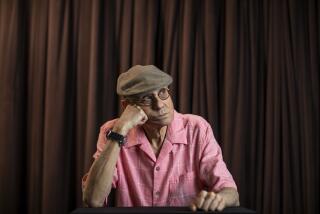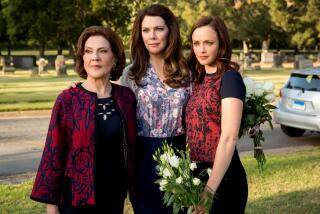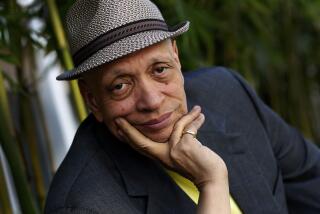BOOK REVIEW: BIOGRAPHY : A New Spin on Galileo, Science and the Catholic Church : GALILEO: A Life, <i> by James Reston Jr.</i> ; HarperCollins; $25, 307 pages
- Share via
In October, 1992, the Roman Catholic Church formally admitted that it had erred in condemning Galileo Galilei more than 350 years ago. A brilliant mathematician, theoretician, experimentalist and inventor, Galileo lived during the turbulent years of the counter-Reformation in Italy, where his social and intellectual ambitions brought him face to face with the church militant--including the wrath of the Inquisition.
Using a telescope whose lenses he had ground himself, Galileo had observed the changing terrain of our moon and the hitherto undiscovered moons of Jupiter. His observations provided new evidence for the heretical idea that the Earth orbits the sun.
Although that idea is no longer in question, the church’s historical relationship with Galileo is still unresolved and contentious. The Vatican’s belated “pardon” spurred James Reston Jr. to write this book--a version of which will soon be dramatized on PBS. “Galileo” is a retelling of the great scientist’s life as a symbol of centuries of tension between the Catholic Church and modern science.
In a “Prelude,” Reston finds an analogy between the spacecraft Galileo, which suffered a crippled antenna on its 1989 mission to Jupiter, and the scientist, who was metaphorically crippled by his insensitivity to the needs of his church. Midway through the narrative Reston pauses for an “Intermezzo,” where he stresses the importance of Galileo’s trial, a proceeding he sees as “the central embarrassment” of modern church history.
Reston recounts Galileo’s childhood in Pisa and adult life in Venice and Florence, where he was burdened with responsibilities for his feckless siblings. He follows Galileo through his posts at the universities of Pisa and Padua, and explains his complicated, political relations with the doge in Venice and the Medici in Florence.
We learn little about Galileo’s emotional life except that a mistress bore him three children. Never clearly drawn, she disappears. A somewhat responsible father, Galileo had his son legitimized and sent both daughters to convents, where they were utterly miserable. At the end of his long life, we learn, he had a liaison with a married woman, but that relationship is tacked on without warning, as if it were an afterthought.
Reston presents a more satisfying account of Galileo’s scientific career. We see him as a young man lecturing to the Florentine Academy about the location of Dante’s hell, and much later demonstrating how ice floats because it is less dense than water.
Reston analyzes the treatises Galileo wrote in the form of dialogues--a convention, Reston explains, that allows Galileo to demonstrate the advantages of scientific experimentation, while ridiculing those who held stubbornly to Aristotelian reasoning from first principles when the conclusions belied common sense.
In his enthusiasm, Reston takes for granted attitudes that are by no means universal. For instance, he asserts that the condemnation of Galileo was a disaster for science as well as the church because “science, fearing the spiritual, became increasingly dry and bloodless, to the point that even the most fantastic discoveries in today’s heavens have lost the power to move the soul and the spirit of mortals.”
Perhaps Reston is unmoved, but not so the millions who read Stephen Hawking with wonder and raced to see pictures of the early universe from NASA’s Cosmic Background Explorer satellite.
Galileo spent his entire life in Italy. Although he kept in touch with the work of Johannes Kepler and Tycho Brahe, both of whom posited a heliocentric universe, he never tried to see them. His world, and Reston’s account, are so Italian that it comes as a jolt to learn that toward the end of his life Galileo actually shared ideas with two Englishmen--Thomas Hobbes and John Milton--who traveled to Italy to visit him.
Reston sees Galileo as the pivotal figure between the medieval world and modern science, and he faults the church for the rift that grew between them. Reston goes on to suggest that this rift has harmed science as much as it harmed the church.
The church, perhaps. But science? Galileo’s magnificent work is the cornerstone of experimental physics. Those who picked up his torch, from Isaac Newton onward, were not thwarted by any lack of papal approval.
More to Read
Sign up for our Book Club newsletter
Get the latest news, events and more from the Los Angeles Times Book Club, and help us get L.A. reading and talking.
You may occasionally receive promotional content from the Los Angeles Times.








